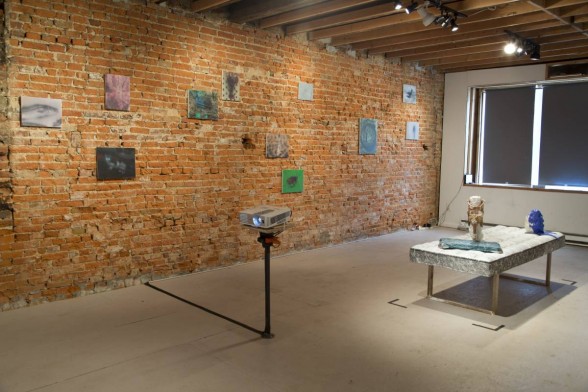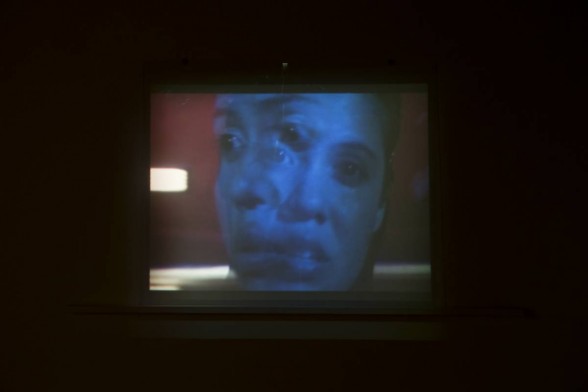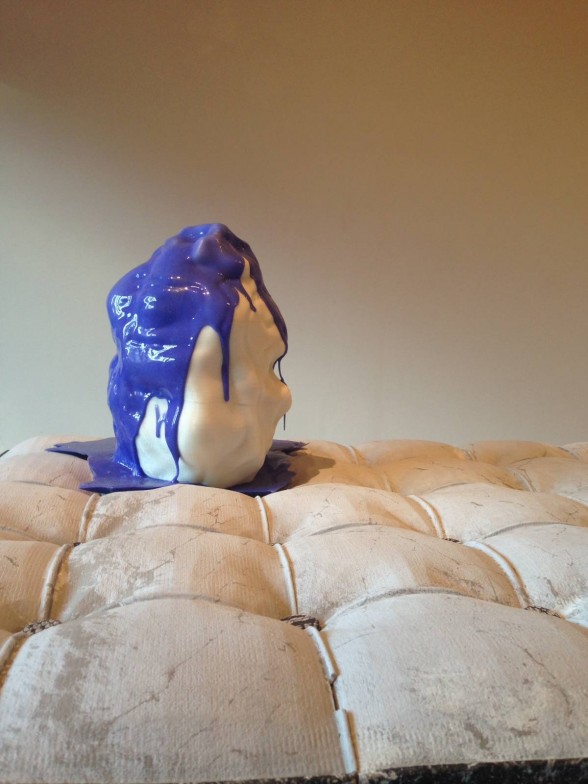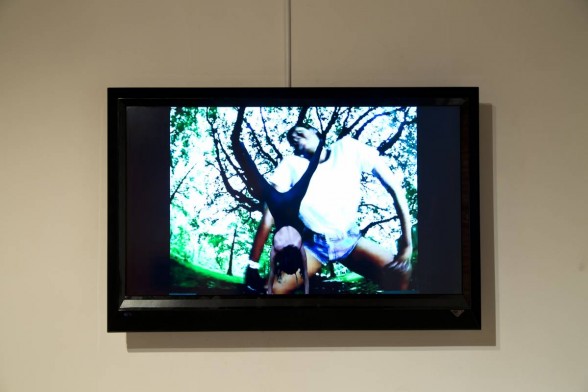[Noreen shares a couple of evocative pieces at this current show, which explores the realm of user interface and how humans interact with digital processes and technology. — the artblog editors]
In(between)ternet

The Internet exists somewhere between the real and the theoretical: a new digital plane of existence. User interface (UI) allows a human being to become part of it. Now on view at Fjord Gallery, Interface presents a spectrum of art that reflects and considers the role of the technology user. The multimedia group show embraces the strange duality of the user interface, which allows both a sense of physicality and autonomy, and immerses the viewer in a non-physical, disembodied world.

This relationship between the tangible world that humankind has inhabited for most of our time on Earth, and the intangible world of digital information–ephemeral, but nonetheless real–manifests itself in both subtle and obvious ways throughout Interface. A conglomerate of sculpture, painting, and video art, the show embraces UI with artistic diversity.
Making the intangible physical

A sculpture of considerable size by Shawn Taylor, “The Infrathin of a suprasensible touch,” uses physical materials to explore the human-UI relationship. Made of a small mattress on legs, the work has a strong tactile presence that exerts a magnetic pull in the show of otherwise ephemeral works. The little lounge-bench is tightly upholstered with hydrographic prints (digital prints transferred by a water immersion technique) reminiscent of the plastic lining of backyard kiddie wading pools.
Dada-like assemblages sit on either side of the bench. The odd, abstract objects range from the handmade, such as an air-dried clay arm, to ready-mades like a Wii Fit board, to carefully crafted hybrids like a white, lumpy form of plastic, 3D-printed from a virtual design on an iPad. Using both objects of technology and objects created by technology, the piece feels complete, and fully representative of a user interface, weaving together both the virtual and the human world. In “The Infrathin,” the digital becomes man-made, and then truly “real”.

The rest of Interface approaches the show’s subject matter and themes more indirectly. “Some Music Videos” by Ilana Harris-Babou, for example, presents the viewer with well-known images of pop culture, juxtaposed with the unfamiliar and uncomfortable gaze of the artist and models, dancing over short, edited clips of popular music videos, such as Biggie Smalls’ “Party & Bullshit” and TLC’s “Waterfalls”.
An undeniable awkwardness comes through the video’s crude editing, stiff dance moves, and blank facial expressions. I was left to wonder if the artist intended to give an impression of a home movie. In that regard, I conceptualize “Some Music Videos” as a vista into the private relationship between media and its consumer: an amateur performance behind closed doors, an imitation of beloved celebrity idols. Perhaps the awkwardness comes from the feeling of voyeurism I detected within myself while watching their jolting and inexperienced dance moves.
This publication of private and intimate moments, winding in and out in varyingly subtle and subliminal ways, imbues Interface with an air of discomfort, and at certain points, an overwhelming amount of information, much like the flow of data that moves through and composes the Internet. This relationship of the tangible and the virtual, alienating and intimidating to some, continues to grow and shape human life–a process envisioned and reconstructed by the art of Interface and its thought-provoking artists, Alina Tenser, Analisa Teachworth, Sam Cockrell, Ilana Harris-Babou, and Shawn Taylor.
Interface is on view at Fjord Gallery now until August 26, 2015. Visiting hours are Saturdays, 12-4 pm, or by appointment.









